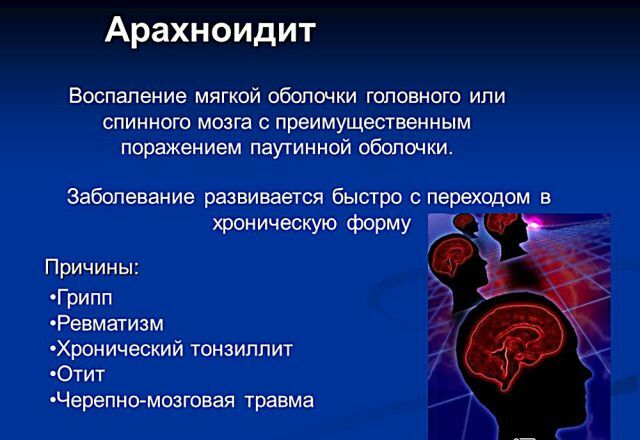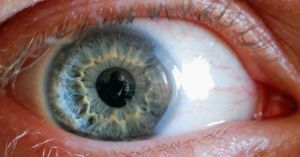 One of the most important sense organs of a person is sight.90% of the general information is given through the eyes.
One of the most important sense organs of a person is sight.90% of the general information is given through the eyes.
There are many diseases that lead to absolute or partial blindness in medicine. These include those that have not been investigated so far, without a full explanation of their manifestation and formation. Some varieties of amaurosis are also classified as such diseases.
Contents
- Features and Specificity
- Features and Distortions
- Features of different forms of the disease
- Amaurosis Leber
- Temporary amaurosis
- Clinic and symptomatology
- Diagnosis and treatment
Features and specifics of
Amavroz is a pathology of the eye apparatus in which absolute or partial loss of vision occurs. This condition is not associated with direct damage to the eye, the pathology is caused by impaired functioning of the nerves of the visual apparatus or segments of the path of the eye analyzer to the brain.
Amavroz( literally from Greek) - dark. In the terminology of medicine is used to express conditions characterized by partial impairment of vision or unreasonable blindness. More often, this anomaly is hereditary, the disease can be both provoked by diseases in the central nervous system or various functional disorders of it.

Visual impairment always gives the patient a lot of discomfort, discomfort and problems. The eyes are the main organ of the senses, through which a person can identify the terrain, see people and objects around him. The most terrible pathology is the loss of the central vision, referred to as amaurosis( blindness).
Pathology is functional, in other words, it is not associated with direct impairment of the functions of the eyeball or pathologies in the structure. This is exactly the precedent when physicians do not observe any abnormalities in the work or structure of the eye, but the patient complains of a deterioration of vision. With congenital amaurosis, the atrophy of the nerves of the visual apparatus follows.
Causes of the disorder
There are a lot of reasons for the development of this pathology. In transient( temporary) amaurosis, they are associated with transient disorders in behavior, transmission of impulses to the optic nerve, or disturbances in the functions of the visual analyzer.
Amavroz( blindness) can cause:
- craniocerebral trauma;
- disorders of cerebral circulation due to strokes or ischemic attacks;
- a brain tumor of a different nature, compressing the visual analyzer or the optic nerve;
- migraine;
- abnormalities of the endocrine system, metabolic disorders, diabetes mellitus;
- effects on the body of toxic drugs, drugs, alcohol;
- intoxication of an infectious nature.
The main cause of congenital Leber's disease( optic neuropathy) is the absence of a clear specificity of cells in the pigment epithelium or photoreceptors. This phenomenon is explained by pathology in the genes.
The disease is often transmitted hereditarily, has an autosomal recessive form of transmission. To be afraid of disease costs only when future parents have mutating genes in their genotype.
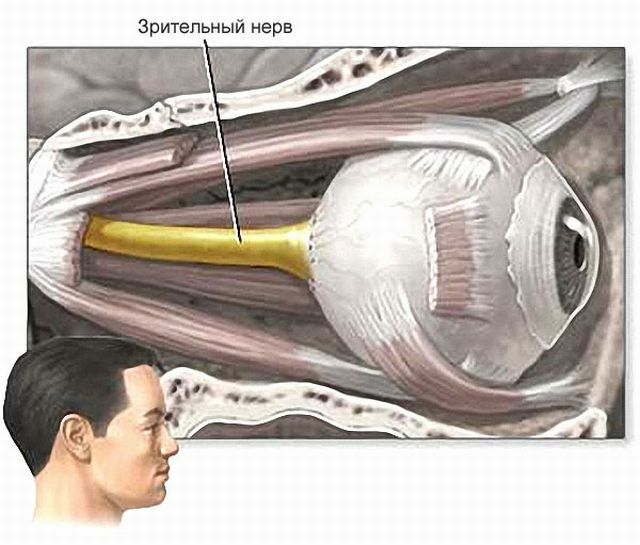
Features of different forms of the disease
Specificity of the forms of amaurosis:
- Transistor .Characterized by a temporary disorder or loss of vision. In this condition, the patient's visual functions may simply fall out for a certain time, but are able to recover independently or with drug therapy.
- Congenital( Leber's disease ).They are associated with disorders in the genotype, namely, the pathology of rhodopsin synthesis in the retina( envelope) of the eye, designed to transmit information to the brain through the optic nerve. With a lack of rhodopsin, the retina is able to convert light that enters it into a nerve impulse, from which the visual image is formed. In addition to rhodopsin, according to recent research, in the eye analyzer other sites are affected - cones, rods.
In medicine, distinguish: persistent loss of vision - Leber's amaurosis and temporary blindness( cardiomyopathy).
Amaurosis Leber
It appears in infants after birth. The patient is noticing: 
- wandering look;
- weak response of the pupil to light rays( on a bright light ray - the pupil should narrow, in dim - expand);
- complete lack of response to the approach of objects;
- nystagmus - eyeballs are constantly moving: then left-right, then up-down;
- strabismus( keratoconus) the ocular cornea becomes convex, like a cone.
With not rapid development of the disease, vision deteriorates gradually, but, after reaching 10 years, it can still disappear.
Temporary amaurosis
In some diseases, temporary blindness may be a concomitant symptom, but after elimination of the main causes( timely and qualitative therapy), it disappears. Etiology of this condition is considered a violation of blood flow in the pool of the carotid aorta( arteries).These disorders can occur with damage in the neck or in the skull:
- clamping or narrowing of the vessels;
- mechanical compression or injury;
- arteritis, aneurysm, dysplasia of vascular walls of the aortic basin, stratification, arteriosclerotic changes in the vessels;
- education, impeding blood circulation;
- fatty, air clogging( embolism) of the vessels.
The reason for the development of transient amaurosis may be: temporary ischemic attacks, cerebral infarction, strokes, vascular microembolism with cholesterol plaques and blood clots.
 In cases of blood flow disorders in the head or neck area, patients may complain of a violation of the sensitivity of the lower, upper extremities, loss of visibility, crawling of the goosebumps. Other symptoms may appear - convulsions, difficulty swallowing, nausea, visual hallucinations.
In cases of blood flow disorders in the head or neck area, patients may complain of a violation of the sensitivity of the lower, upper extremities, loss of visibility, crawling of the goosebumps. Other symptoms may appear - convulsions, difficulty swallowing, nausea, visual hallucinations.
Very often visibility deterioration is observed only in one eye. Characterized by such a state of falling out of the field of vision, a decrease in severity, the appearance of spots before the eye.
It occurs that when viewed from an ophthalmologist, a retinal infarction is detected, which can provoke the atrophy of the optic nerve. However, such states are extremely rare. This is explained by the fact that around the visual apparatus is a rich bypass network of blood streams that compensate for the shortage of blood flow, along the central vessels, to the eye.
Clinic and symptomatology
Leber's amaurosis develops due to the extinction of light-sensitive cells in the retina of the eye apparatus, and they do not have the property for restoration. The cause of their death is the non-functioning gene RPE65.
The disease manifests itself when the children are born or from the first days of their life. This disease belongs to the most complex cases of retinitis pigmentosa - a rare and extremely difficult disease. The main symptoms include: subnormal or unregistered ERG, loss of central vision.
Symptomatic of manifestation of the disease:
- strabismus;
- high hypermetropia;
- neuromuscular and neurologic disorder;
- mental retardation;
- keratoconus;
- nystagmus;
- cataract( in the second decade of life);
- hearing loss.
These symptoms may also be associated with manifestations of other systemic diseases, which complicates the formulation of an accurate diagnosis.
Diagnosis and treatment
Diagnosis of the disease is aimed at identifying the etiology of the disease so the patient is shown an examination from the oculist, 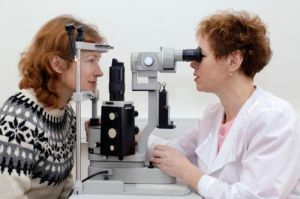 angiologist, neurologist, and other related specialists. To confirm or refute the diagnosis and the appointment of effective therapy, a thorough diagnosis is needed.
angiologist, neurologist, and other related specialists. To confirm or refute the diagnosis and the appointment of effective therapy, a thorough diagnosis is needed.
It is based on the collection of anamnesis and examination of the patient. He is required to examine the fundus, perform a visual quality check and acuity, as well as a neurological and visual reflex. The patient is also shown a biochemical and general laboratory blood test. If necessary, the genetic examination is sent to the MRI.
There is no definite method for treating amaurosis in medicine, because the disease is hereditary and genetic. In this pathological process of the formation of the disease involves the central nervous system, there are violations in the endocrine system. Proceeding from the etiology of transient amaurosis development, effective correction therapy is prescribed:
- In case of blood flow disorders, is prescribed diuretics, nootropics, hypotonic drugs and medications that improve blood circulation. With insignificant manifestations of vascular disorders, blindness often passes by itself, without requiring therapy.
- Diseases of the oncological nature of require chemo- and radiotherapy. With a favorable location of the tumor and timely access to doctors, a full recovery of vision is possible.
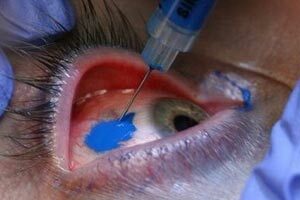
- With acute intoxication of the nervous system , disintoxication treatment is usually performed. Changes in the eye apparatus, in this case reversible and vision restored.
- Migraine is treated with antispasmodics. As a rule, attacks of blindness go away with the migraine itself.
- With endocrine disorders, is undergoing a thorough examination, correction therapy is prescribed - hormone replacement therapy, intake of sugar-reducing medications. With effective and timely therapy, vision can be fully restored.
Unlike the transitional, Leber's amaurosis, is not medically treated, like all other diseases based on genetic mutations. Such patients, if small visual functions are preserved, is admitted wearing glasses, supervision by a neurologist.

